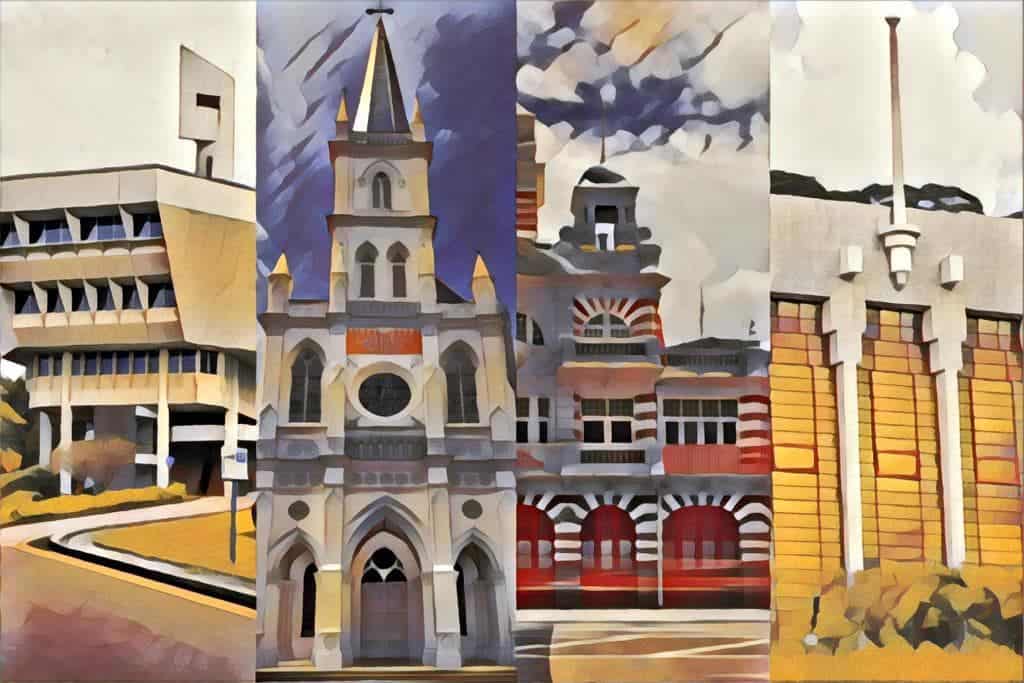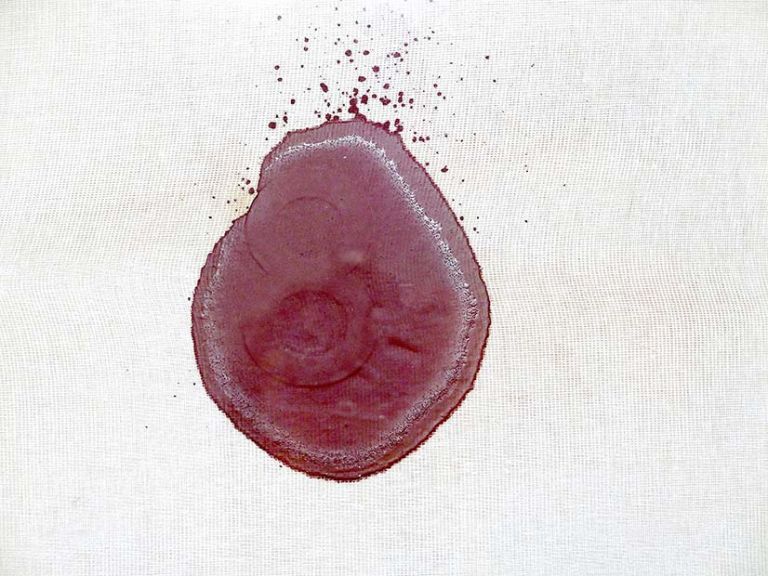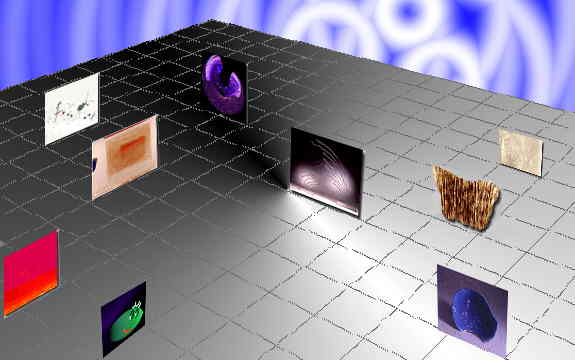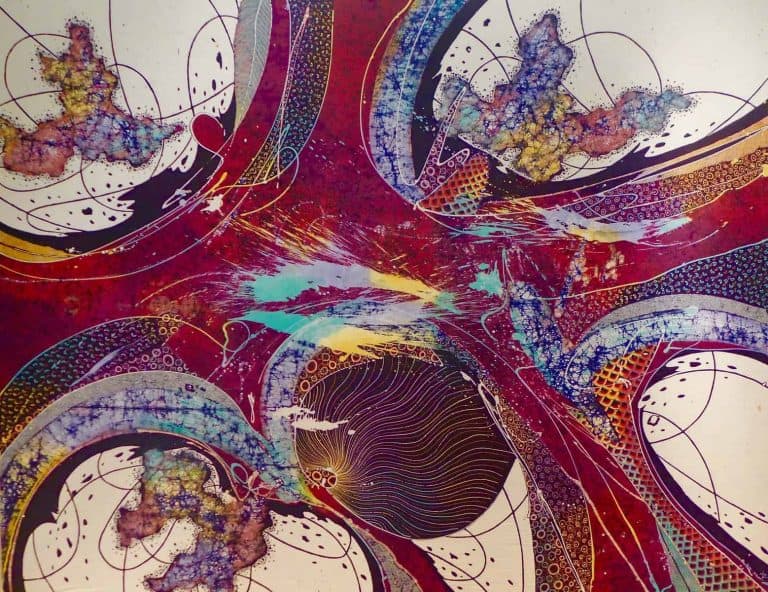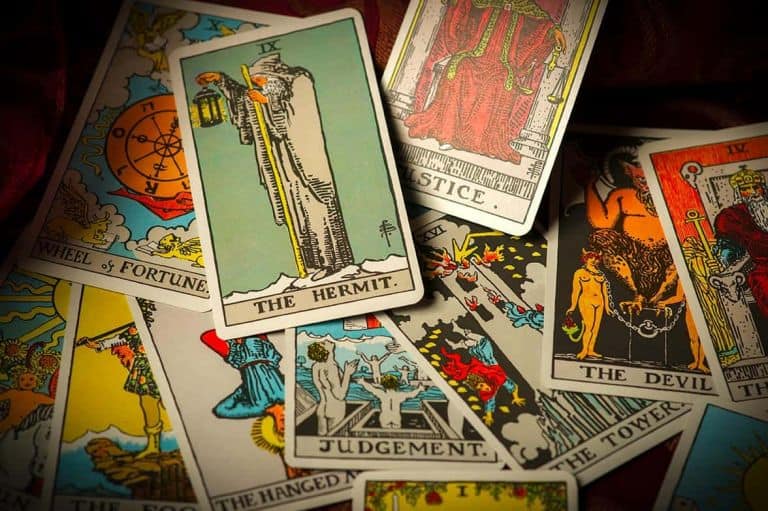In the past few months that we’ve collectively stayed at home, what are some places in Singapore that we have missed? In this series, we invite Singapore visual artists to respond to beloved places that have patiently awaited the day that we can visit them once more, as well as some of the essential services that have kept us going during this pandemic.
This week, artists Divaagar, Justin Lee, Marla Bendini and Khairullah Rahim respond to heritage sites that stood stoic and stately whilst the world around them changed. Slide over the photos to reveal the artists’ works.
Jurong Town Hall | Divaagar, The Crown Juwel, 2020
[twenty20 img1=”27603″ img2=”27604″ offset=”0.5″]
When you think about futuristic architectural styles in Singapore, the most recent image that may come to mind is the new Jewel Changi Airport, with its doughnut-shaped glass-and-steel façade and its impressive indoor waterfall.
But the Jurong Town Hall was an equally unique and innovative building when it was completed in 1974. It was the headquarters of the Jurong Town Corporation (JTC) until 2000, and currently serves as the Trade Association Hub.
The building design comprises asymmetrical, geometric modular blocks, and a concourse with a glass roof in between. The irregular design and use of new materials provides light and shade as needed in Singapore’s tropical climate. Another focal point of its design is a chimney-like 50m high digital clock that serves as the “mast” of the building.
In Divaagar’s work, he conjures the image of the Jurong Town Hall as the “Crown Juwel” of the West in the year 2050. With colourful fan palms and tropical plants flanking the building, it also hosts a “crystal garden, accompanied by levitating diamonds that will be a star attraction.” It imagines Jurong Town Hall as “a futuristic landmark and tourist destination” while paying homage to its roots as a piece of “tech-inspired architecture”.
Could Jurong Town Hall become the next big tourist attraction? After all, its companion building, Singapore Science Centre, was designed by the same team of architects and forms the basis of many of our fond memories of childhood school field trips. Maybe one day, we will all be having picnics and flying kites under the lavender skies of The Crown Juwel.
______________________
Artwork information: Divaagar, The Crown Juwel, 2020. This work is produced in an edition of 10 and is for sale at $250 per print. Interested buyers may contact Divaagar for details at art.divaagar [at] gmail.com and divaagar.com.
CHIJMES | Justin Lee, Nine Clouds Above CHIJMES, 2020
[twenty20 img1=”27605″ img2=”27606″ offset=”0.5″]
Although CHIJMES is currently a commercial complex and a part of the civic district restaurant and nightlife scene, it was once a girls’ convent school. Its name consists of the initials of its former occupants (Convent of the Holy Infant Jesus, CHIJ) and alludes to the sound of “chimes” in its former chapel compound.
In 1847, a Catholic mission in Singapore had just finished building the Cathedral of the Good Shepherd and its founding priest, Father Jean-Marie Beurel, turned his attention to education. He founded Saint Joseph’s Institution for boys in 1852, and in the same year asked the Straits Settlements Government for land to build a charitable institution for girls. However, the Governor denied his request.
Father Beurel instead bought a house in Victoria Street, now known as Caldwell House, as well as additional blocks between Victoria Street and North Bridge Road that belonged to Raffles Institution. He also went to Paris to recruit teachers from the order of nuns that ran the Institute of the Charitable Schools of the Holy Infant Jesus of St Maur. This formed the beginnings of CHIJ in Singapore. While the CHIJ primary and secondary school catered to English-speaking students, a school for Chinese-speaking girls was also started later in 1933 that became St Nicholas Girls’ School.
In 1955, the convent also opened an orphanage for unwanted children who had been abandoned, often by single or poor mothers who left them at the orphanage’s side gate known as the “Baby Gate” or “Gate of Hope”. Girls at the orphanage could learn skills and also receive a free education at the school.
Justin Lee’s work, Nine Clouds Above CHIJMES, shows a number of vibrantly coloured clouds above the current façade of the gothic-style CHIJ chapel. Perhaps in tandem with the hopes and aspirations of former students who have passed through CHIJ, Lee wants to inspire us to “keep dreaming and connect the future with the clouds you always trusted in”.
______________________
Artwork information: Justin Lee, Nine Clouds Above CHIJMES, 2020, digital print, 20cm by 25cm. This original work is for sale at the price of S$480 and comes in 7 editions. Interested buyers may contact Justin Lee for details at Justinhair [at] hotmail.com.
Former Ford Factory | Marla Bendini, Surrender, before and after, 1942
[twenty20 img1=”27607″ img2=”27608″ offset=”0.5″]
The Former Ford Factory is an important building in the history of Singapore. Originally the site of the Ford Motor Company of Malaya, it became the site where the British officially surrendered Singapore to the Japanese on 15 February 1942, during World War II. The students among us may recognise this date as the day we observe Total Defence Day in local schools.
During the war, the Ford Factory served as the headquarters of Lieutenant-General Tomoyuki Yamashita. The factory also continued to be used by the Japanese army to manufacture vehicles. The boardroom of the factory remains to this day, well-known as the site in which the actual surrender took place. In 2006, Memories at Old Ford Factory was opened at the site, as a museum dedicated to records and artefacts relating to World War II in Singapore.
In her oil painting Surrender, before and after, 1942, Marla Bendini paints a viscously red night sky behind the building, the colour of blood, “to deepen the mystery around the history of the building.” The glass windows of the building also appear eerily green against the red. The building itself comes with its own bloody history, being associated with the bloodshed of war, as well as rumours of paranormal sightings of former Japanese soldiers after the factory was shut down and abandoned in 1980.
Bendini also notes that this image of her work represents only a portion of the full painting, which extends to the right and includes trees surrounding the building in the Bukit Timah area, as “a testimony from mother nature and the land herself, a witness in and outside of time, before and after 1942”.
______________________
Artwork information: Marla Bendini, Surrender, before and after, 1942, 2020, oil on canvas, 73cm x 132cm. This original work is for sale at the price of S$1942. Interested buyers may contact Marla Bendini for details at +65 88919513.
Central Fire Station | Khairullah Rahim, Vague Station, 2020
[twenty20 img1=”27609″ img2=”27610″ offset=”0.5″]
The Central Fire Station is Singapore’s oldest surviving fire station, and is still an active fire station in the civic district. It was completed in 1909 and was the main station of the Singapore Fire Brigade.
During most of the 1800s, Singapore lacked a formal fire brigade, and instead depended on the labour of volunteers, convicts, policemen, and soldiers. The Brigade became more professional with the arrival of Superintendent Montague William Pett in 1904, who was a professional firefighter.
The fire station is known for its distinctive red-and-white bricks, also known as “blood and bondage” style architecture, referring to the exposed red and white bricks. This architectural style was popular in the Edwardian era of the early 1900s.
Aside from its historical trappings, Khairullah Rahim’s work Vague Station deals with our memories of familiar monuments during the pandemic lockdown. Although many of us may pass by these iconic buildings during our regular commutes, they have now become “mostly vague, blur images etched in our minds.”
This digital drawing also appears to be made from solid purple lines when viewed from afar, but a closer look shows that it is actually made of overlapping blue and red line drawings, meticulously rendered in a disruptive and unstable manner. Khairullah states that this digital work is an adaptation of his usual art processes, given that he has recently bought a new drawing tablet from an online store. “This new approach of art making is one of my first, but definitely not the last,” he concludes.
______________________
Artwork information: Khairullah Rahim, Vague Station, 2020, digital drawing, 5760 × 3840 pixels. Interested buyers may contact Khairullah for details at khairullahrahim [at] gmail.com. The work is for sale and all proceeds will be donated to charity.
Keep your eyes peeled for more artists’ creative responses to the places that they’ve missed in other articles in this series, as well as our upcoming microsite in August!
All photos in this article were shot by Jeremy Goh of Trippin’ Creatives.
All works produced are original and were specially commissioned for this project. If works are sold, Plural Art Mag will take no commissions in respect of such sales. If you are able to, we urge you to consider acquiring a work as this will go towards sustaining our vibrant community of local creatives, as well as the wider ecosystem that supports them.
This project is produced by Plural Art Mag as part of the #SGCultureAnywhere campaign.

